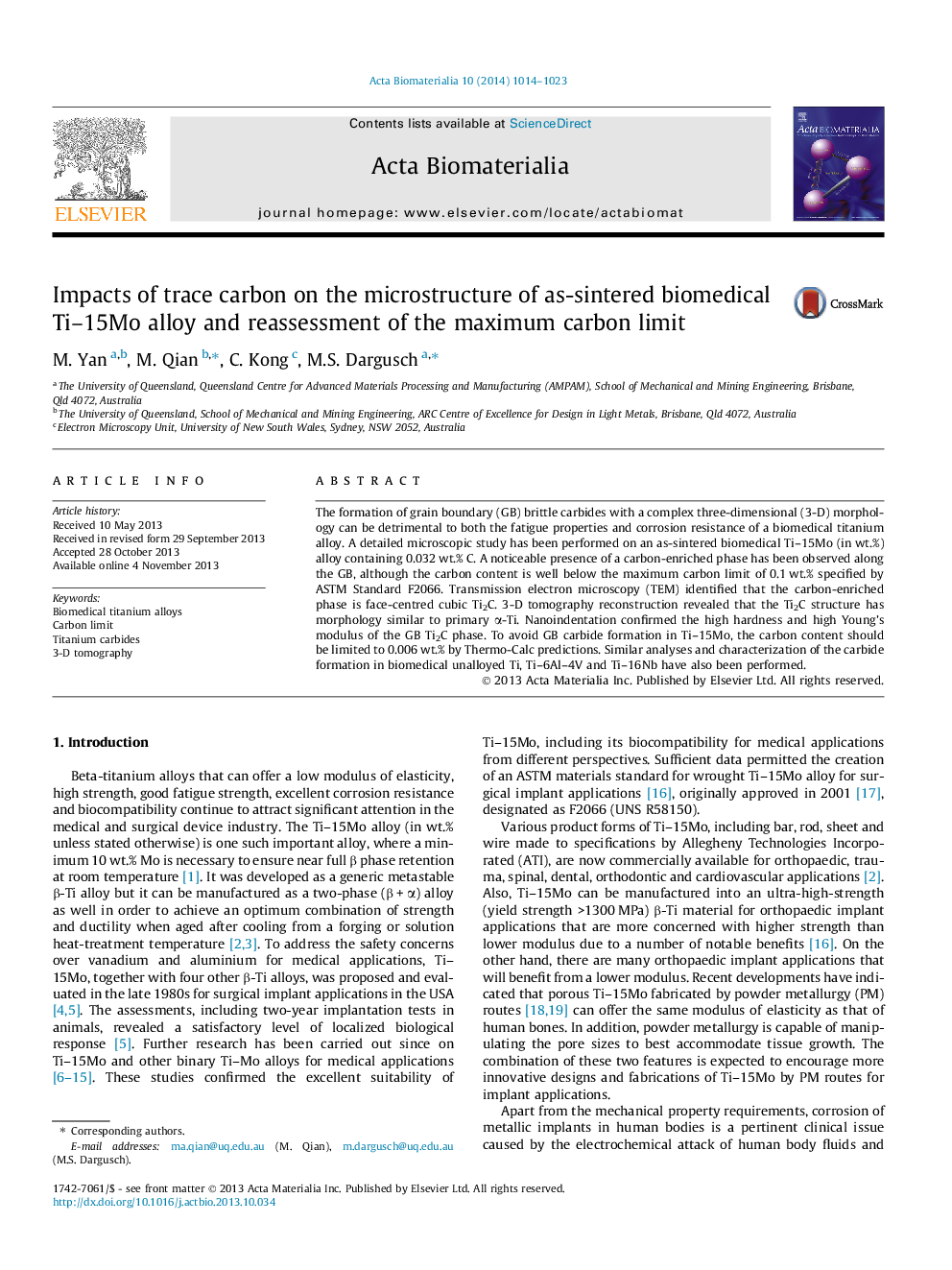| Article ID | Journal | Published Year | Pages | File Type |
|---|---|---|---|---|
| 10159377 | Acta Biomaterialia | 2014 | 10 Pages |
Abstract
The formation of grain boundary (GB) brittle carbides with a complex three-dimensional (3-D) morphology can be detrimental to both the fatigue properties and corrosion resistance of a biomedical titanium alloy. A detailed microscopic study has been performed on an as-sintered biomedical Ti-15Mo (in wt.%) alloy containing 0.032 wt.% C. A noticeable presence of a carbon-enriched phase has been observed along the GB, although the carbon content is well below the maximum carbon limit of 0.1 wt.% specified by ASTM Standard F2066. Transmission electron microscopy (TEM) identified that the carbon-enriched phase is face-centred cubic Ti2C. 3-D tomography reconstruction revealed that the Ti2C structure has morphology similar to primary α-Ti. Nanoindentation confirmed the high hardness and high Young's modulus of the GB Ti2C phase. To avoid GB carbide formation in Ti-15Mo, the carbon content should be limited to 0.006 wt.% by Thermo-Calc predictions. Similar analyses and characterization of the carbide formation in biomedical unalloyed Ti, Ti-6Al-4V and Ti-16Nb have also been performed.
Related Topics
Physical Sciences and Engineering
Chemical Engineering
Bioengineering
Authors
M. Yan, M. Qian, C. Kong, M.S. Dargusch,
